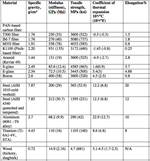Joining
Whenever possible, multiple composite parts should be joined together during cure. This process is called “co-curing” and results in the strongest composite-to-composite bond. It also has the advantage of reducing part count and minimizing related machining operations Achieving good metal-to-composite
Share
Whenever possible, multiple composite parts should be joined together during cure. This process is called “co-curing” and results in the strongest composite-to-composite bond. It also has the advantage of reducing part count and minimizing related machining operations
Achieving good metal-to-composite bonds is more difficult. Because metals usually have a higher coefficient of thermal expansion than composites, especially carbon and aramid composites, the bonds can break if the structure is subject to large temperature swings. That is often why co-cured metal-to-composite bonds fail even before the part is put into service. Also, aluminum oxidizes rapidly, making it difficult to achieve a good bond to this metal. For these reasons, mechanical fasteners are often specified when joining composites to metals. Mechanical attachment can be effective, but care must be taken in designing such joints.
Drilling damages composites by severing fibers and reducing their length. Heat from machining can weaken or even destroy the matrix locally. Cut fibers interrupt the load path, and unidirectional plies will fray. Special drill bits designed for composites should be used to minimize heating and fraying. Using woven fabrics as the innermost and outermost plies also reduces drilling damage.
Properly torqued fasteners significantly increase the bearing strength of composites. Furthermore, quasi-isotropic layups provide the highest bearing strength.The ratio of edge distance to fastener diameter (e/D) should be at least 3:1 (e = the distance from the center of the hole to the edge of the part; D = fastener diameter).
Related Content
-
CAMX 2022 exhibit preview: Bally Ribbon Mills
Bally Ribbon Mills’ highlights its capabilities in design and manufacture of woven structural shapes for hybrid composite structures used in aerospace applications.
-
Materials & Processes: Fibers for composites
The structural properties of composite materials are derived primarily from the fiber reinforcement. Fiber types, their manufacture, their uses and the end-market applications in which they find most use are described.
-
Composite resins price change report
CW’s running summary of resin price change announcements from major material suppliers that serve the composites manufacturing industry.










